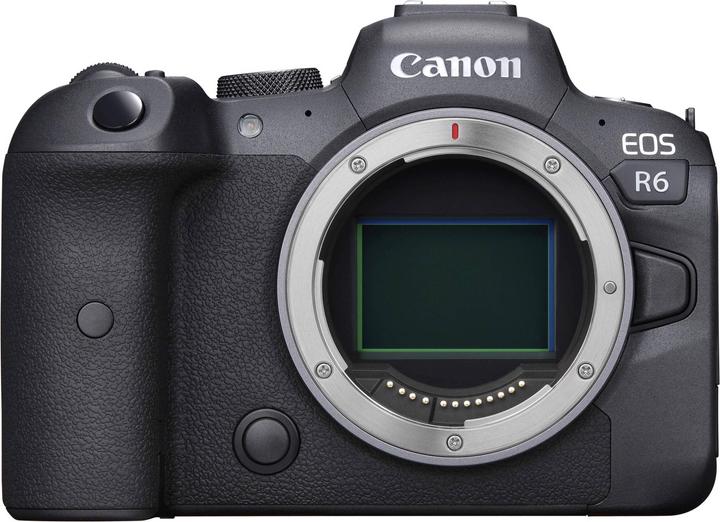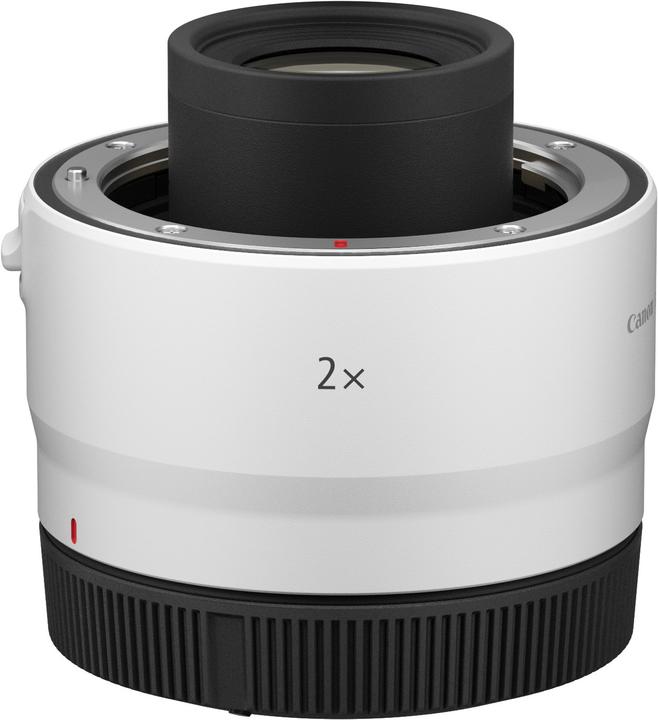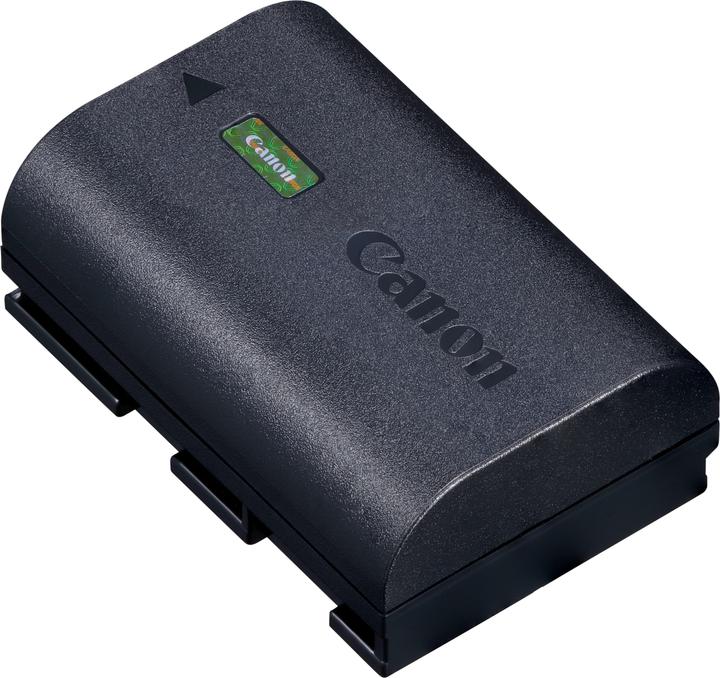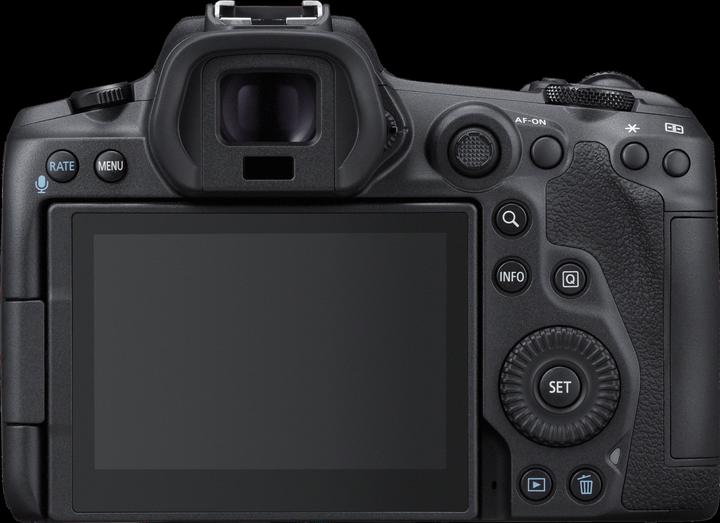

The Canon EOS R5, the R6, new lenses and converters are coming soon

Canon is launching two mirrorless full-frame cameras with high continuous shooting speeds and powerful video features. The EOS R5 can even do 8K. Affordable super-telephoto lenses will also soon be available.
That's quite a lot of products Canon is announcing today: two cameras, four lenses, two teleconverters. Plus accessories. The main attraction is certainly the Canon EOS R5, which sets a new milestone with 8K video in RAW format. However, I also find the telephoto lenses remarkable, which are lightweight and affordable despite their extreme focal lengths.
Canon EOS R5
We've known since February that Canon will be launching an 8K camera and now all the details are known. Judging by the specifications, this camera is suitable for any field. A professional all-rounder.

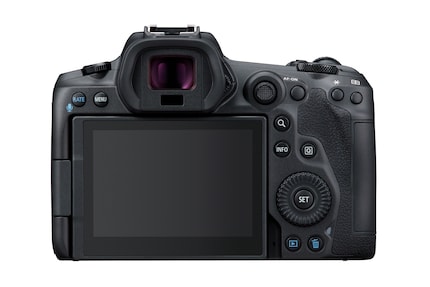
Video function:
- 8K with 24, 25 or 30 fps
- 4K with up to 100 or 120 fps
- 8K also possible in 12-bit RAW format (8192×4320)
12-bit RAW is only available in 8K. However, 4K and Full HD are available in 10-bit Canon Log (H.265) and 10-bit HDR PQ. Strangely, the camera does not manage more than 60 fps in Full HD, but 120 fps in 4K.
The camera has all the important features for video production, such as a fully articulated LCD, headphone and microphone output and a built-in image stabiliser.
Photos:
- 45 megapixel resolution
- 20 fps with electronic shutter and 12 fps with mechanical shutter. All this with RAW+JPEG and tracking autofocus.
- ISO sensitivity up to 51 200 (video up to 25 600), expandable to 102 400 ISO.
- Autofocus (Dual Pixel AF) works down to -6 EV.
- Object tracking is designed to recognise eyes, faces, heads and bodies and has been trained with machine learning.
- Photos can be saved in HEIF format.
Body:
- Magnesium housing
- Shutter designed for 500,000 releases
- Two card slots, one for SD UHS-II and one for CF Express
- Electronic viewfinder with 5.76 million pixels
- WLAN 2.4/5 GHz and Bluetooth
- USB C 3.1 can be used for charging or in continuous operation
- Second screen
The operating concept is more orientated towards SLR cameras than the Canon EOS R. Instead of the somewhat fiddly touch bar of the EOS R, the good old mini joystick is used again here. The rotary wheel next to the screen is also back.
The Canon EOS R5 is expected to be available from the end of July 2020.

Canon EOS R6
As a cheaper alternative to the R5, the R6 only has 20 megapixels and therefore no 8K video. It is said to be the same sensor as in the Canon EOS 1D X Brand III, but with a different low-pass filter. The body is made of polycarbonate instead of magnesium alloy and does not have a second LCD.
However, the R6 is on a par with the R5 in many respects, such as the continuous shooting speed, the integrated image stabiliser, the autofocus and the viewfinder. The sensitivity even reaches up to 102 400 ISO and is therefore slightly higher than that of the R5. The video capabilities are well developed: 4K is available in 10 bit, the screen can be moved freely and headphone and microphone connections are also available. The R6 also has two card slots, but for two SD cards.
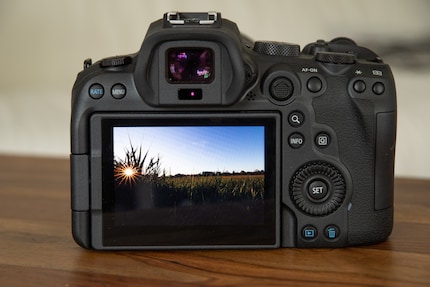
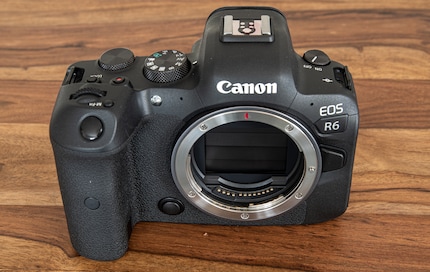
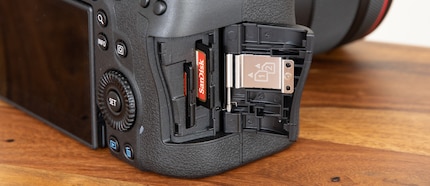
I have already been able to try out a pre-production model of the R6. It feels very comfortable in the hand and makes a solid impression. Thanks to the omission of the second screen, there is enough space at the top for a proper mode dial. Otherwise, the operation is practically the same as with the R5.
It's still too early to pass judgement on the image quality, as I can't use the RAW files yet and there may still be changes to the firmware. But if the sensor is carried over from the EOS 1D X Brand III, you can expect very good performance in the high ISO range. The face and eye autofocus worked more poorly than well for me when photographing ducks. But that's not saying much, it certainly depends on the subject. Ducks have a habit of constantly turning their heads and burying themselves in the feathers.


The Canon EOS R6 is expected to be available from the end of August 2020.
An L-Supertele with 100-500 mm
In 2019, Canon launched the 70-200mm lens, the first real telephoto lens for the R system. Now comes a "super telephoto" with an even longer focal length: it ranges from 100 to 500 mm. Despite its long maximum focal length, the L-quality lens weighs just 1525 grams and is 20 cm long, with a filter diameter of 77 millimetres. This is not possible without compromising on speed: it is f/4.5-7.1.
The closest focusing distance is quite short for a super telephoto lens: 90 cm at 100 mm, 120 cm at 500 mm. This enables a reproduction scale of 1:3. The lens is dust and splash-proof.
Expected sales launch: September 2020.
An affordable 85mm lens
The Canon 85mm 1.8 for SLR cameras is a classic. Now something similar is also available for mirrorless cameras, although Canon claims that the imaging performance is better here. The light intensity is slightly weaker at f/2.
This lens can be used for macros with a reproduction scale of 1:2. It has an image stabiliser that is designed to compensate for five exposure levels on its own and eight together with the stabiliser integrated in the camera. It weighs 500 grams and measures 9 centimetres.
The sales launch of the 85mm lens is planned for October 2020.
Favourable and lightweight super telephoto lenses
Canon is launching two super telephoto lenses with 600 and 800 mm fixed focal lengths at the end of July. Extreme focal lengths at an affordable price, a bearable weight and a reasonable size.
How is that? Quite simply: Canon has sacrificed speed. It is f/11, and now most people are probably not even reading any further. But the idea is quite interesting. Canon has a 600mm lens with a speed of f/4. It costs a five-figure sum, weighs 3 kilograms and is 45 cm long. The RF 600mm weighs 930 grams, is 20 centimetres long and costs less than 800 francs.
These are good arguments. I once spent an afternoon at the zoo with a 600mm f/4 lens to see how cumbersome it is. It was extremely tedious.
It remains to be seen how useful the new Canon telescopes are in practice. It probably depends heavily on how well the camera performs in low light. The Canon EOS R6 could certainly fit the bill. I hope to be able to test it soon.
By the way: lens hood and lens bag are not included with these lenses. In this respect, the two Superteles are not quite as cheap as they first appear.
Teleconverter and accessories
Finally, the usual teleconverters are now also available for the R system. They extend the focal length of the lens by a factor of 1.4 or 2.0, respectively. The speed decreases by the corresponding value.
The teleconverters work with the two Superteles and also with the 100-500mm, whereby the focal length must be set to at least 300 mm. Unfortunately, they do not work with the 70-200mm.
The new LP-E6NH battery with 2130 mAh capacity also fits in cameras that used the previous LP-E6, and vice versa. This applies to the Canon EOS 5D Mark II-IV, for example.
The BG-R10 battery grip is suitable for the R5 and R6. The wireless transmitter, however, only fits the R5.
First assessment: everything fits together now
Until now, Canon's mirrorless full-frame cameras have lacked cameras that are on the same level as the high-class lenses. Now they are here and the line-up as a whole makes sense. Of course, there are still a few lenses missing, for example a small and affordable 50mm, but for a system that is only two years old, the selection of lenses is absolutely top class. According to Canon, two more models will be added this year.
You may be wondering about the order in which Canon introduced the whole thing to the market. At the launch of the system, there were some super-duper lenses and two cameras that didn't knock anyone's socks off. Now there are super-duper cameras, but lenses for people with a limited budget. Shouldn't Canon have brought out cameras and lenses for the same target group?
One explanation for this could be the EOS 1D X Mark III from the beginning of 2020. Canon traditionally introduces new technologies (sensor, new image processor, etc.) with the flagship model. These are then utilised second and third in the more affordable models. In fact, this has now happened with the mirrorless R5 and R6 in roughly the same way as I suspected.
And the expensive lenses from 2018? They probably have to do with the competition. Sony was threatening to pull away in the mirrorless full-frame segment, and at the same time Nikon was positioning itself with the Z system. Canon had to deliver something substantial. If only to make a clear statement that they were serious about the mirrorless R system. Now we know that this really is the case.


My interest in IT and writing landed me in tech journalism early on (2000). I want to know how we can use technology without being used. Outside of the office, I’m a keen musician who makes up for lacking talent with excessive enthusiasm.
From the latest iPhone to the return of 80s fashion. The editorial team will help you make sense of it all.
Show all